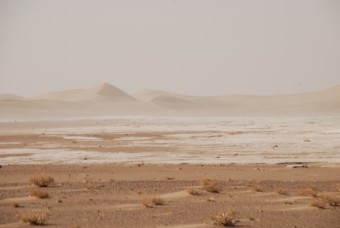Trenches are open all over the world, news on the next TSG meeting (in London), a landslide database visualisation, and more. Today is Friday and here are your links!
Tectonics Study Group at UCL and Birkbeck
The next Tectonics Study Group meeting will be co-hosted by University College London and Birkbeck between the 6th –8th of January 2016.
Registration will open mid-September, along with confirmed invited speakers.
The conference will cover field, experimental and theoretical studies with a specific focus towards the following themes:
- Geodesy and structural geology
- Palaeoseismology and earthquake geology
- Fracture and fluid flow
- Brittle-ductile transition in rocks
- Shale geomechanics
A special workshop will run on the morning of the 6th January, where Professor Cees Paschier from the Johannes Gutenberg University of Mainz will deliver a 2.5-hour Distinguished Keynote Invited Lecture with practical demonstrations on “Microtectonics”, hosted at the new Birkbeck Petrology Lab. The workshop will be free of charge. More information to follow.
A pre-conference fieldtrip to the Dorset coastline will be held from January 4th to 5th. More information to follow.
The deadline for abstract submission is the close of the day on Monday, November 16th, 2015.
(Tom Mitchell, Gerald Roberts, Penelope Wilson via GEO-TECTONICS)
Several trenches open all over the world
1. Taylorsville Fault Zone, USA
2. Irtysh Fault, Kazakhstan
3. More Kazakhstan
(…you can only anticipate some digging action here, hehe)
Rainfall-induced mass movements between 2007 and 2015
“Landslides are one of the most dangerous natural hazards on the planet. Between 2007 and 2015, there were more than 25,000 reported deaths due to rainfall-triggered landslides around the world. […] The [landslide] catalog has been updated to include landslide events from the last five years. […] Watch the video to see the distribution of rainfall-triggered landslides that took place from 2007 to 2015″, Kayvon Sharghi and Lori Perkins on NASA Viz.
(HT The Landslide Blog)
GSA journals are going open access!
“Beginning in 2017 and phased in over the following threeyears, all GSA journals will be freely available online (i.e.,open access). GSA journals will retain their high quality; there will be no change in current editorial or peer-reviewpolicies and procedures. […] To offset […] losses, a publication fee will be instituted along with the designation of some strategic funds to assist authors who lack resources topay these fees”, Harry “Hap” McSween, GSA President, via GSA Today.
A good introduction to geology course is actually a course in time
“Understanding geology gives you a new way to interpret the visual data of the planet. Sometimes this can feel like X-ray vision or a sixth sense. The color of the soil can tell you what it’s made of. […] Looking out of a plane window at the contours of a mountain range, you can tell from shape alone whether the peaks are old or new—or rather, which are very very old and which are just old”, Julia Turner on slate.com.
Two new papers:
1. “Western US intermountain seismicity caused by changes in upper mantle flow” by Becker et al. in Nature.
2. “From dust to dust: Quaternary wind erosion of the Mu Us Desert and the Loess Plateau, China” by Kapp et al. in Geology.
Have a good read and a nice weekend!





No Comments
No comments yet.